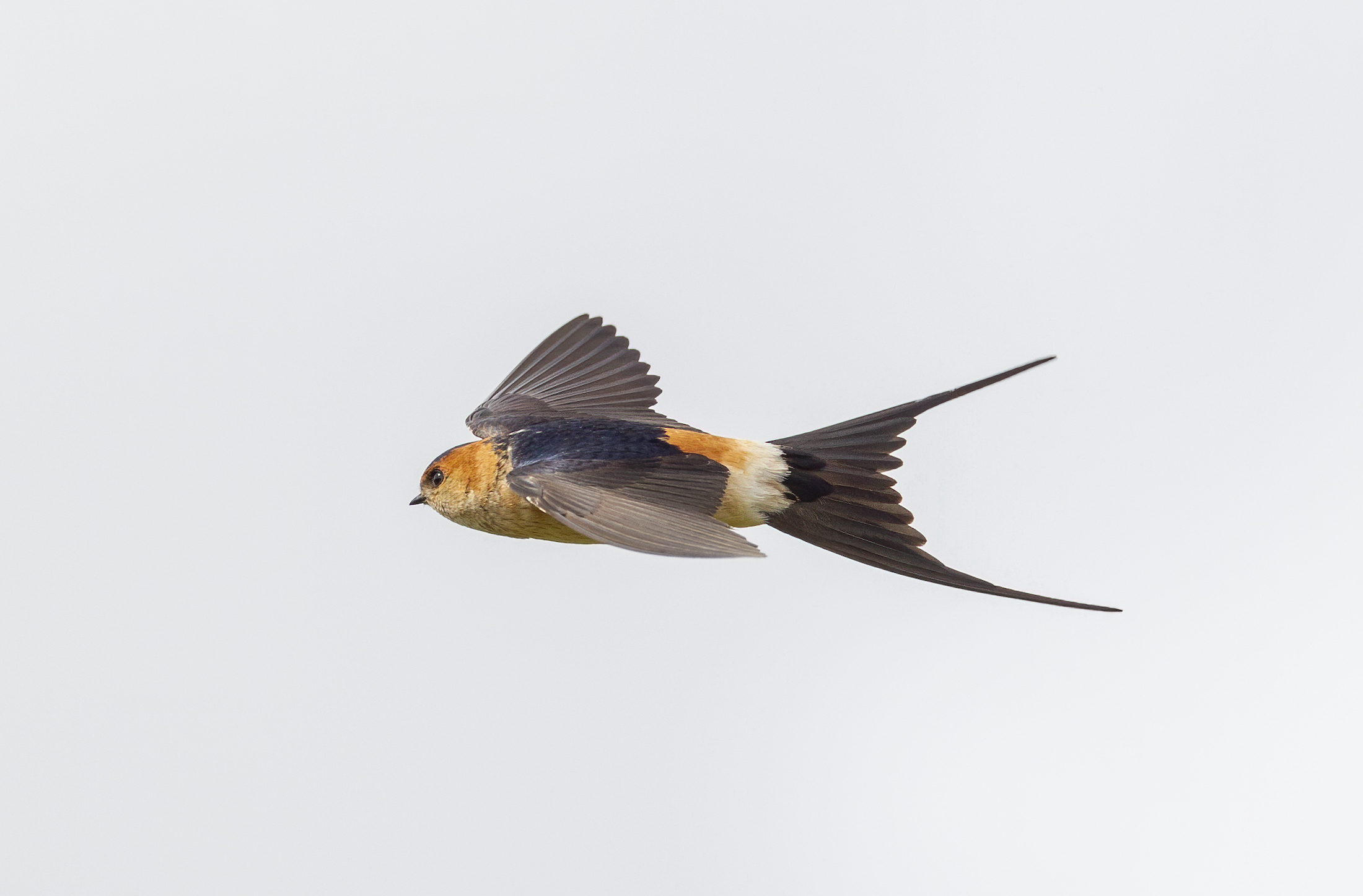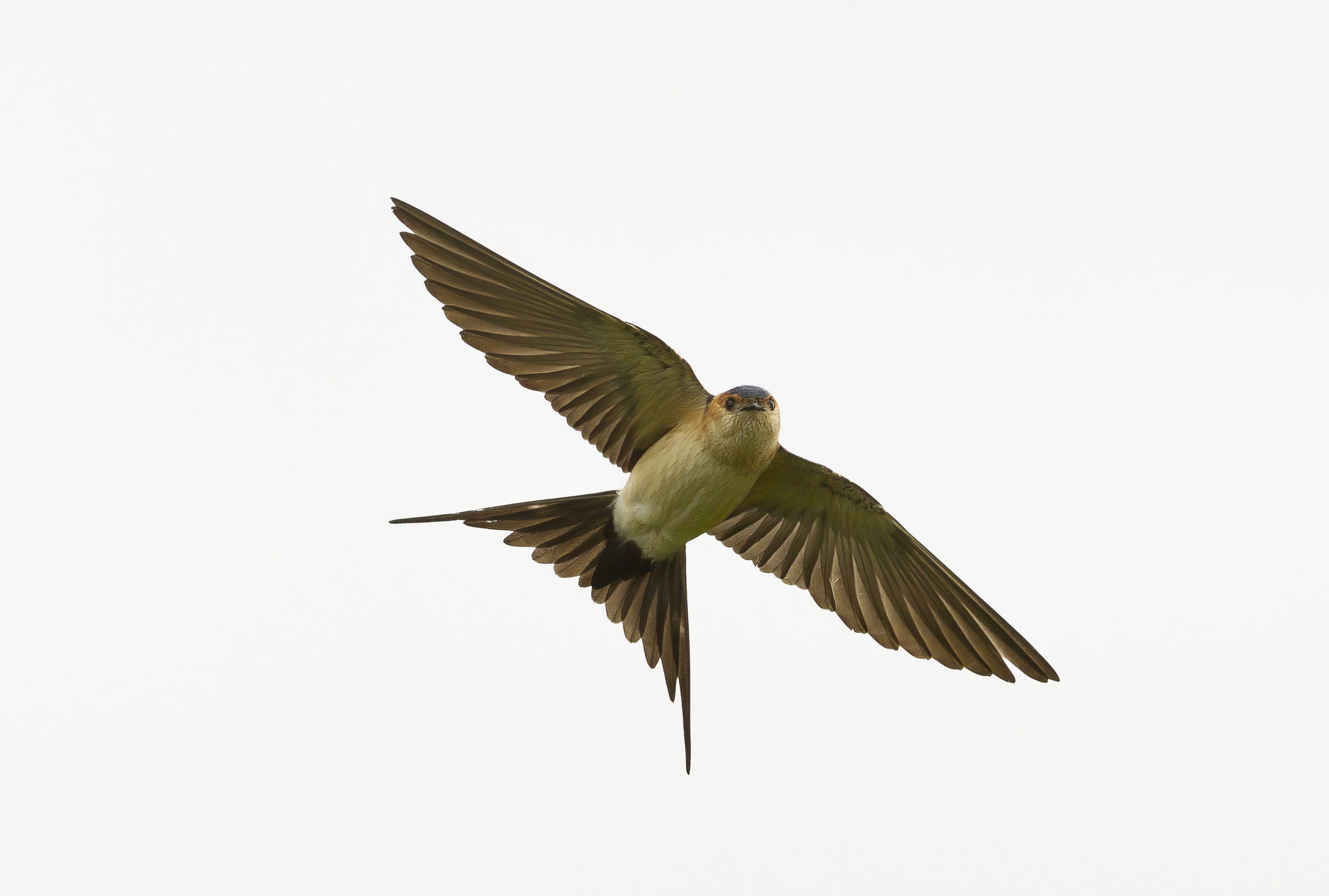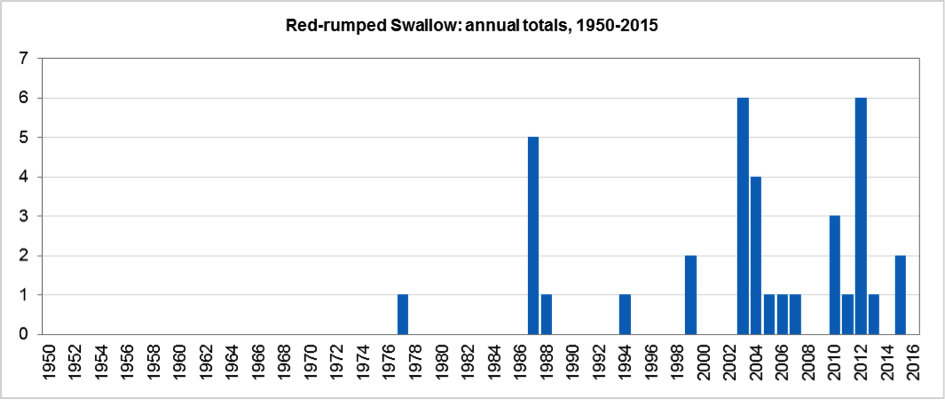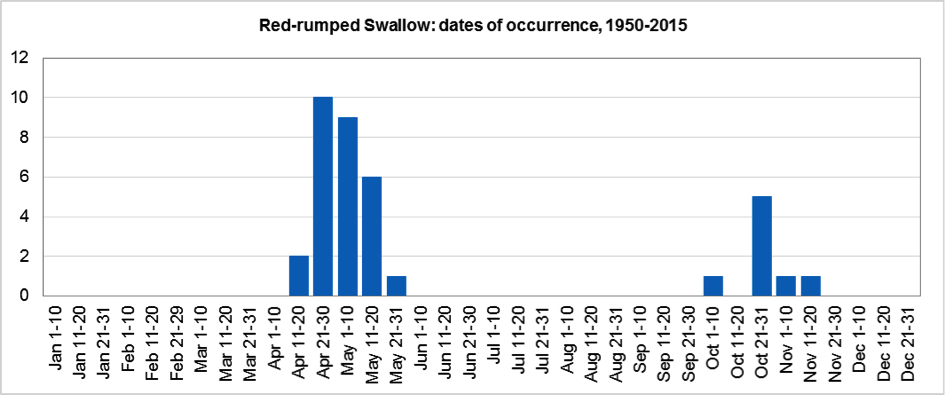Red-rumped Swallow Cecropis daurica
Rare migrant, almost annual since 2003. Southern Europe.


Red-rumped Swallow at Barton Pits on April 28th 2012; photo courtesy of Graham Catley (left) and Barry Clarkson (right).
A very late arrival as a county bird with the first at Gibraltar Point in Oct 1977, although it was another decade before any more were seen when one in May 1987 and four in October 1987 were part of an influx of 61 that year, which included seven together on the Isles of Scilly on October 27th. Following this record number, the numbers in the UK continued to rise with double figures in most years thereafter and more than 20 in 1990 (29), 2002 (24), 2003 (47), 2004 (53) and 2005 (24) after which it ceased to be considered by BBRC. The total number of Lincolnshire records to 2019 is 44 involving around 59 birds although the latter total may involve some duplication; occurrences up to 2015 are shown in the first charet, below. During the period 2003-2019 there have only been two blank years, 2008 and 2009. Two birds have appeared together on around 10 occasions and four were recorded at Gibraltar Point NNR in 1987 and 2003; Gibraltar Point has hosted more than two-thirds of the county records. The majority (78%) have occurred in spring (see second chart), with the earliest at Freiston Shore on April 15th 2016. The latest spring records were both on May 29th at Covenham Reservoir in 2015 and at Gibraltar Point in 2019. Autumn records span October 5th to November 14th 1988. The most recent autumn record was at Donna Nook October 5th 2010, since when all records have been exclusively in April-May up to 2019.
The species was formerly a hard one to see in Britain, but it has spread as a breeding species north and east across Europe. It extended north from the 1920s from Iberia (where it first bred in central Spain 1951-1953 and northern Spain 1960) followed by a large expansion into Portugal 1970-1990. Northwards expansion occurred at the same time into mainland France and east to Romania, Slovenia and Hungary. It has become an annual vagrant in The Netherlands and Sweden, is regular in Austria and also reaches Ireland, Iceland, Norway, Denmark, Finland and Poland and has turned up in Madeira and the Azores. White and Kehoe (2020) reported that there have now been more than 1,000 British records during 1958-2018.


Finder’s report: Red-rumped Swallow at Gibraltar Point, October 29th, 1977, first county record.
by R. Thompson
Note: this account is based on the original (brief) RC submission. The BBRC report for 1977 noted that spring influxes are expected, but the pronounced arrival on the East Coast in October is unprecedented, and that the total of 13 compares with five in each of the two previous best years (1968 and 1973). At the time this brought the British total to 55 records from 1950 onwards.
Circumstances
Arrived at Gibraltar Point at about 2pm, parked at first car park and on entering the reserve, stopped at the Mill Pond to see if any passerines were present – this is usually a good spot. Observed several Swallows (5-6) hawking flies over the pond on arrival. Birds were using a small bare bush close to the pond on right hand side for perching. Almost immediately noticed one bird with pale rump flying with the Swallows over pond – initial impression that it was a House Martin. Bird perched close to but separate from other Swallows on the same bush. Observations through 10x50 binoculars down to 10 yd. when perched. Weather was very good with sunshine but not directly on pond. Wind was a fairly strong SW, visibility good with little cloud cover.
Description
General appearance – noted very pale rump, noticeable black cap, chestnut-coloured neck band, tail streamers shorter than adult Swallows, but well developed – suggesting adult bird. Bird made two short flights over pond whilst under observation returning reach time to same perch. Other Swallows also made similar flights and eventually flew off together in southerly direction. Red-rumped Swallow stayed for some five minutes after other birds left, spent time preening before flying off in a similar direction. Notes taken at the time of observation only describe general colouration, as above. Observation mentioned to two ladies staying at the Point later in the afternoon and checked by reference to their “Hamlyn guide to birds of Britain and Europe”.
(Account prepared October 2017; updated with reference to the new Birds of Lincolnshire (2021) October 2022)

